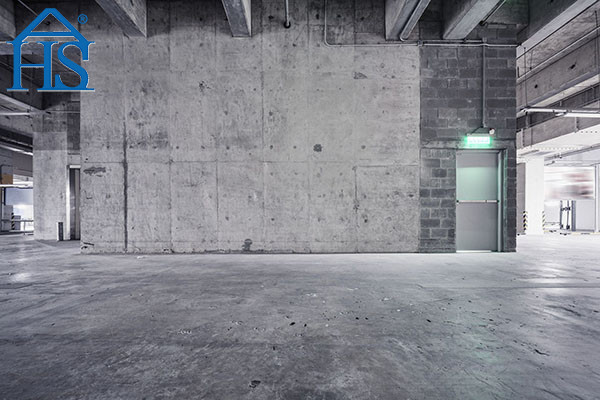İnşaat dünyasında, beton temel bir üründür. Binalarımızın omurgasıdır, yollar, ve köprüler. But what if we could make this essential material even better? Enter microsilica, a game-changer in the concrete industry.
The Science Behind How Microsilica Improves Concrete
Ne zaman mikrosilika is added to concrete, it fills in the spaces between cement particles, creating a denser, stronger material. This process, known as particle packing, is one of the key ways microsilica improves concrete. But that’s not all. Microsilica also reacts with the calcium hydroxide in concrete, forming additional strong and durable calcium silicate hydrate (CSH), the “glue” that holds concrete together.
How Microsilica Enhances Concrete Strength
One of the most significant benefits of microsilica is its ability to enhance concrete strength. By filling in the gaps between cement particles and forming additional CSH, microsilica creates a denser, stronger concrete that can withstand greater loads and stresses.
The Impact of Microsilica on Concrete Durability
Durability is a key concern in construction. Materials need to withstand the test of time, and that’s where microsilica comes in. By reducing permeability and increasing resistance to chemical attacks, microsilica helps create a concrete that’s built to last.
The Role of Microsilica in Reducing Permeability in Concrete
Permeability is a measure of how easily liquids and gases can pass through a material. Beton içinde, high permeability can lead to problems like corrosion and freeze-thaw damage. Neyse ki, microsilica can help. By filling in the spaces between cement particles, microsilica reduces permeability, making concrete more durable and long-lasting.
Microsilica in High-Performance Concrete
Yüksek performanslı beton (HPC) is designed to have superior characteristics, such as high strength and durability. Microsilica plays a key role in creating HPC, enhancing its properties and making it an ideal choice for demanding construction projects.
Betonda Mikrosilika: A Cost Analysis
The cost analysis of microsilica in concrete is multifaceted. On one hand, the use of microsilica can increase the initial cost of the concrete mix due to the need for additional admixtures to maintain workability. Diğer taraftan, the enhanced mechanical properties and durability performance can lead to long-term cost savings. Örneğin, concrete containing microsilica gains high early strength, which can reduce the time required for curing and thus speed up construction processes. Üstelik, the improved durability can reduce maintenance and repair costs over the lifespan of the structure.
Yine de, the cost-effectiveness of using microsilica in concrete can depend on various factors, including the specific application, the availability and cost of microsilica in the local market, and the cost of alternative materials or methods that could achieve similar performance. Öyleyse, a comprehensive cost analysis should consider both the short-term and long-term costs and benefits, as well as the specific circumstances of the project.
Comparing Microsilica with Other Concrete Admixtures
Microsilica isn’t the only admixture that can improve concrete. From fly ash to ground granulated blast-furnace slag, there are many options to choose from. Each of these admixtures brings its own unique set of properties to the table, and understanding their differences can help you choose the right one for your specific application.
Külleri Uçur
Külleri Uçur is a byproduct of coal combustion in power plants. It’s a pozzolanic material, meaning it reacts with calcium hydroxide to form cementitious compounds. Betonda kullanıldığında, fly ash can improve workability, reduce heat of hydration, and increase ultimate strength. Yine de, the rate of strength gain is slower with fly ash, which can be a disadvantage in some applications.
Ground Granulated Blast-Furnace Slag (GGBS)
GGBS is a byproduct of the iron-making process. Betonda kullanıldığında, it can significantly enhance the durability and workability of the mix. Like fly ash, GGBS is a pozzolanic material, but it also has cementitious properties when activated by alkalis. This means it can replace a portion of the cement in a concrete mix, reducing the environmental impact of the concrete.
Microsilica vs. Other Admixtures
Compared to fly ash and GGBS, microsilica is a much finer material, with particles about 100 times smaller than average cement particles. This gives it a high surface area, which allows it to fill in the spaces between cement particles, improving the density and strength of the concrete. Microsilica also reacts quickly with calcium hydroxide, leading to a faster strength gain than fly ash or GGBS.
Yine de, the use of microsilica can increase the water demand of the concrete mix, which can affect workability. This is typically addressed by using water-reducing admixtures.
Real-World Applications of Microsilica in Concrete
Microsilica in the Construction of High-Rise Buildings
High-rise buildings require concrete that’s strong, dayanıklı, and resistant. This case study will delve into how microsilica meets these needs, exploring its role in the construction of a specific high-rise building.
Microsilica in Bridge Construction
Bridges are exposed to a range of stresses, from heavy loads to harsh weather conditions. This case study will explore how microsilica helps create a concrete that can withstand these challenges, focusing on a specific bridge construction project.
Microsilica in Road Infrastructure
Roads are subject to constant wear and tear, requiring a durable, resistant material. This case study will delve into how microsilica improves the concrete used in road infrastructure, focusing on a specific road construction project.





